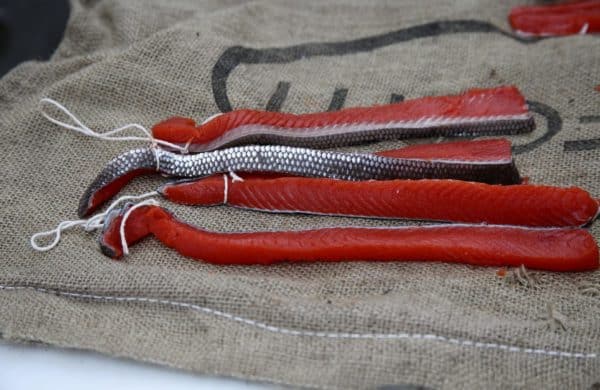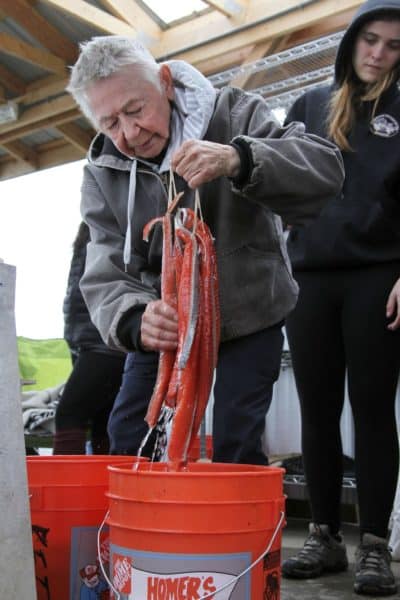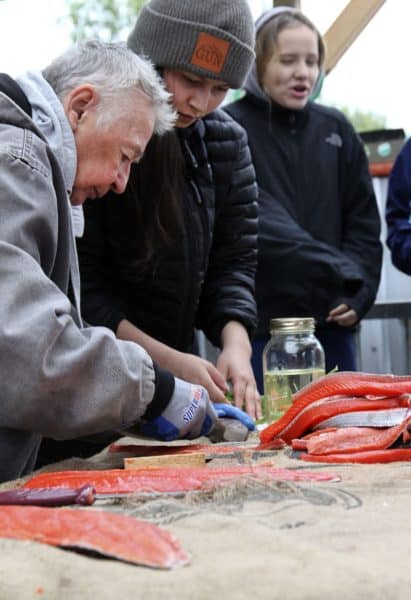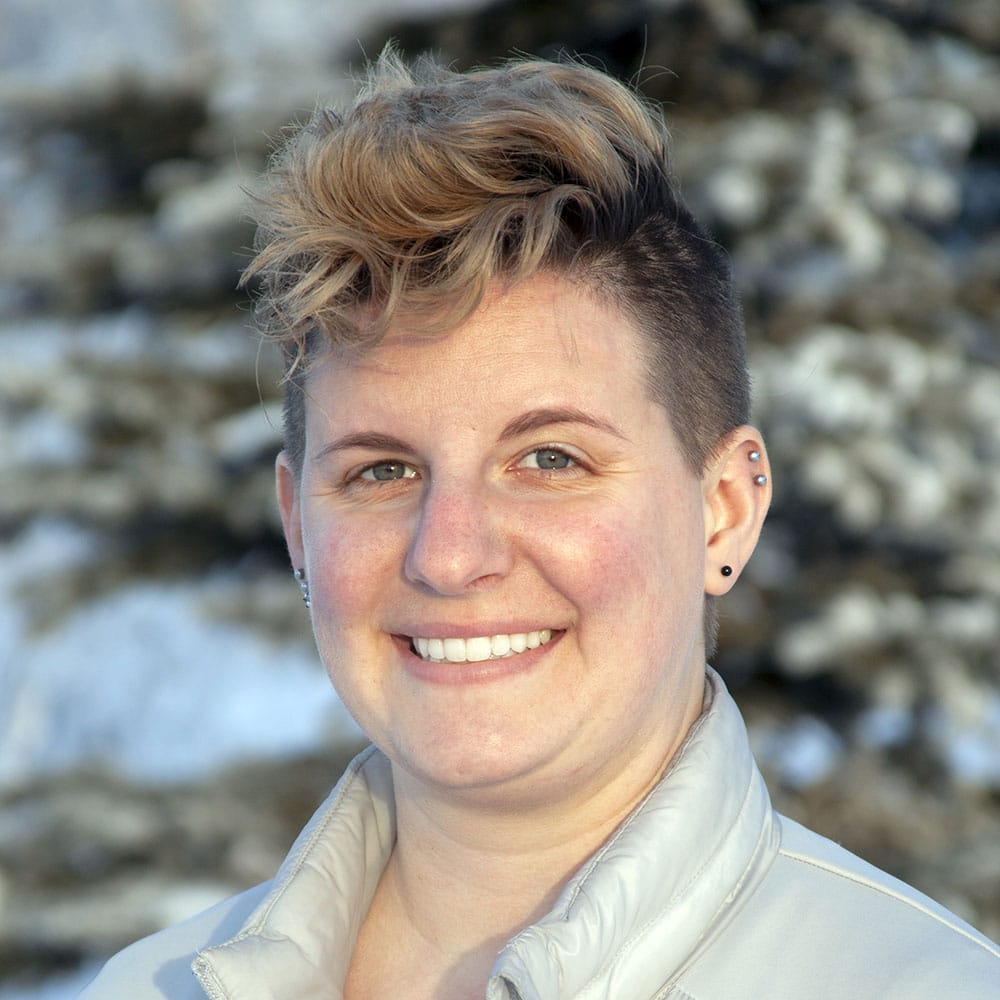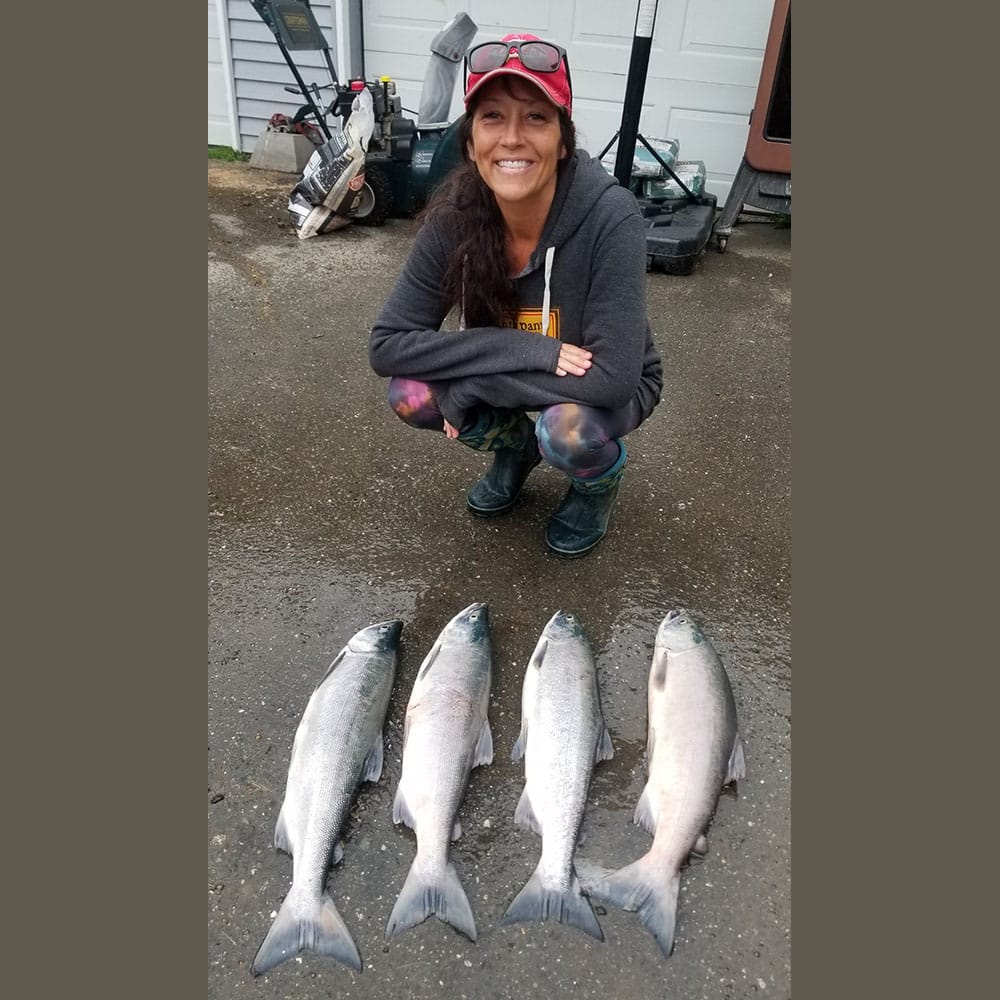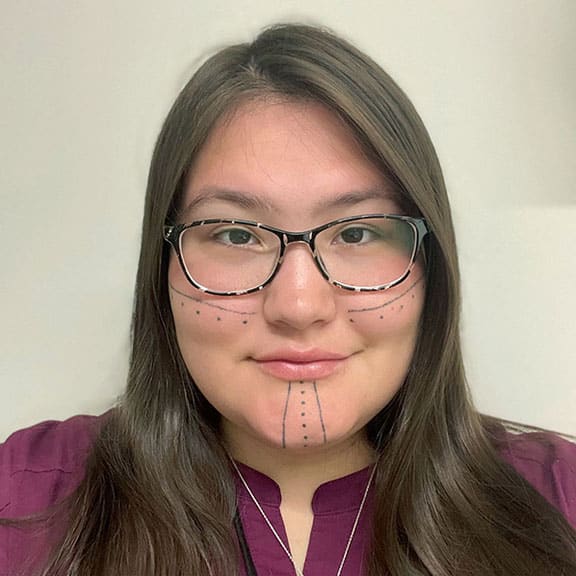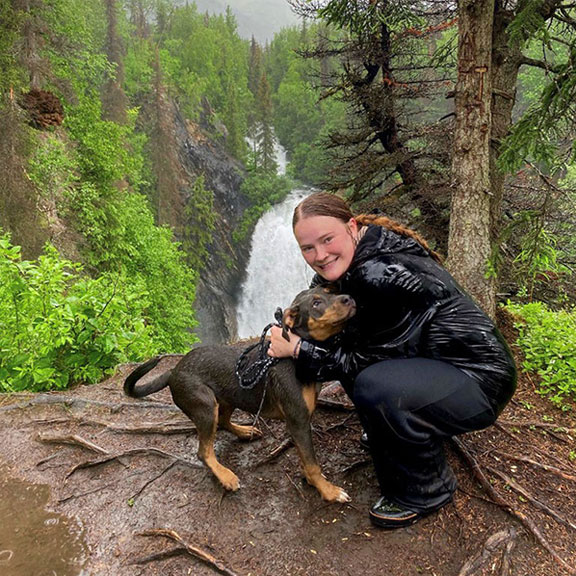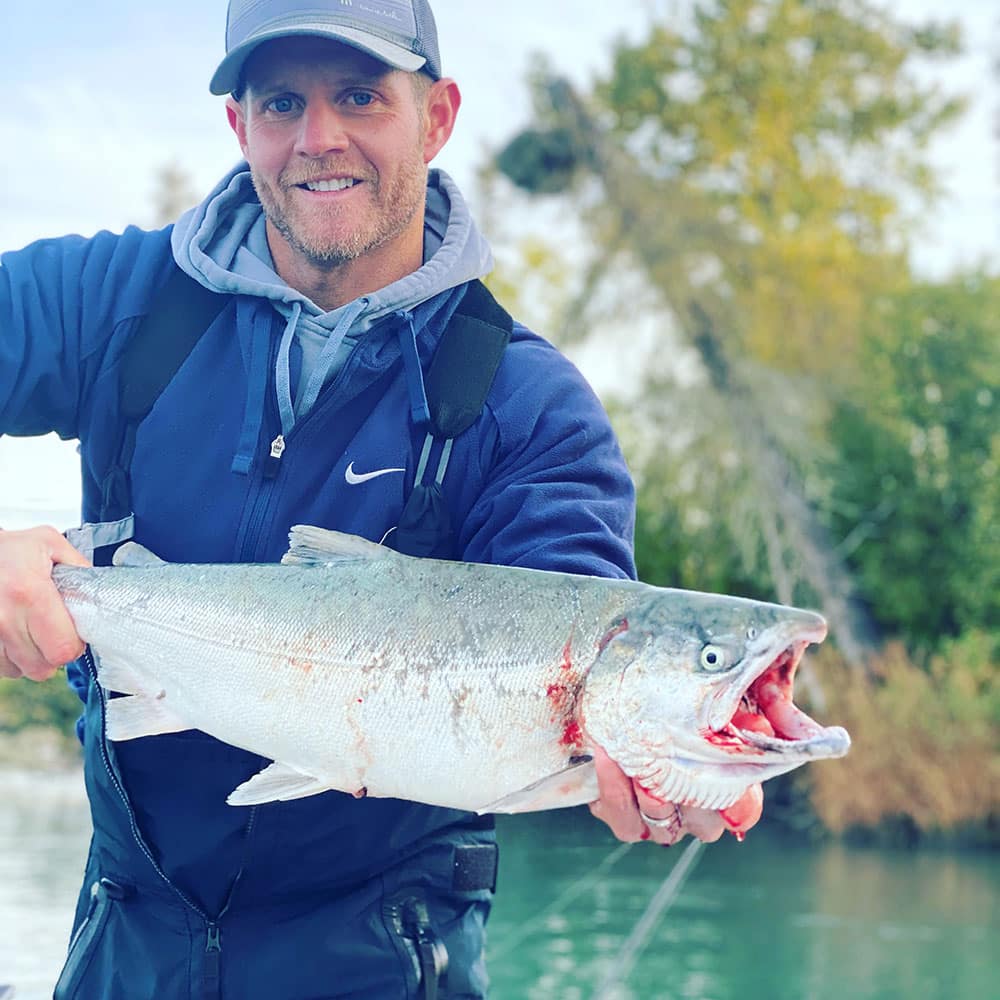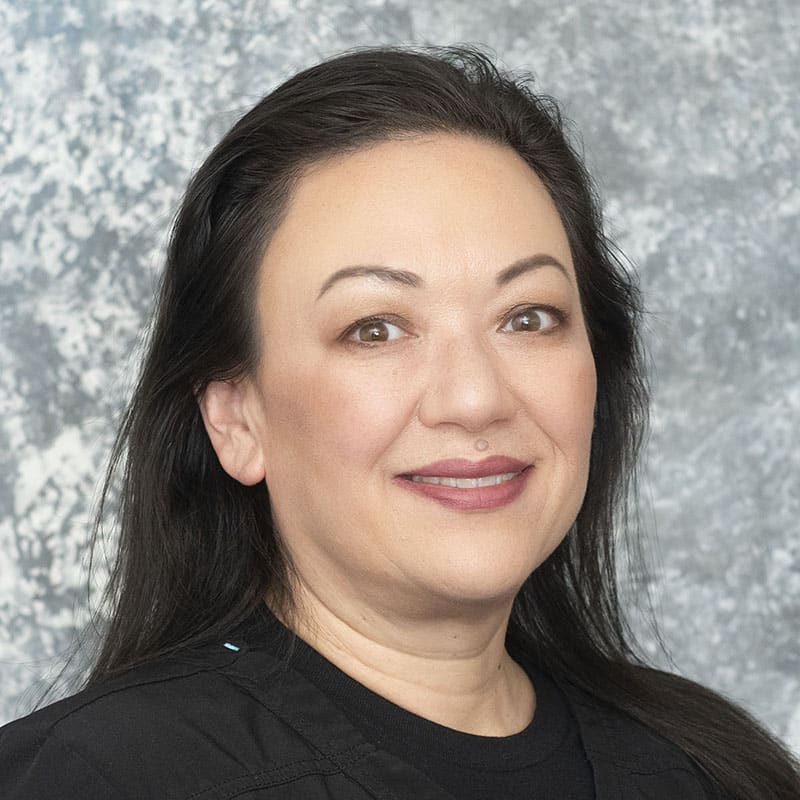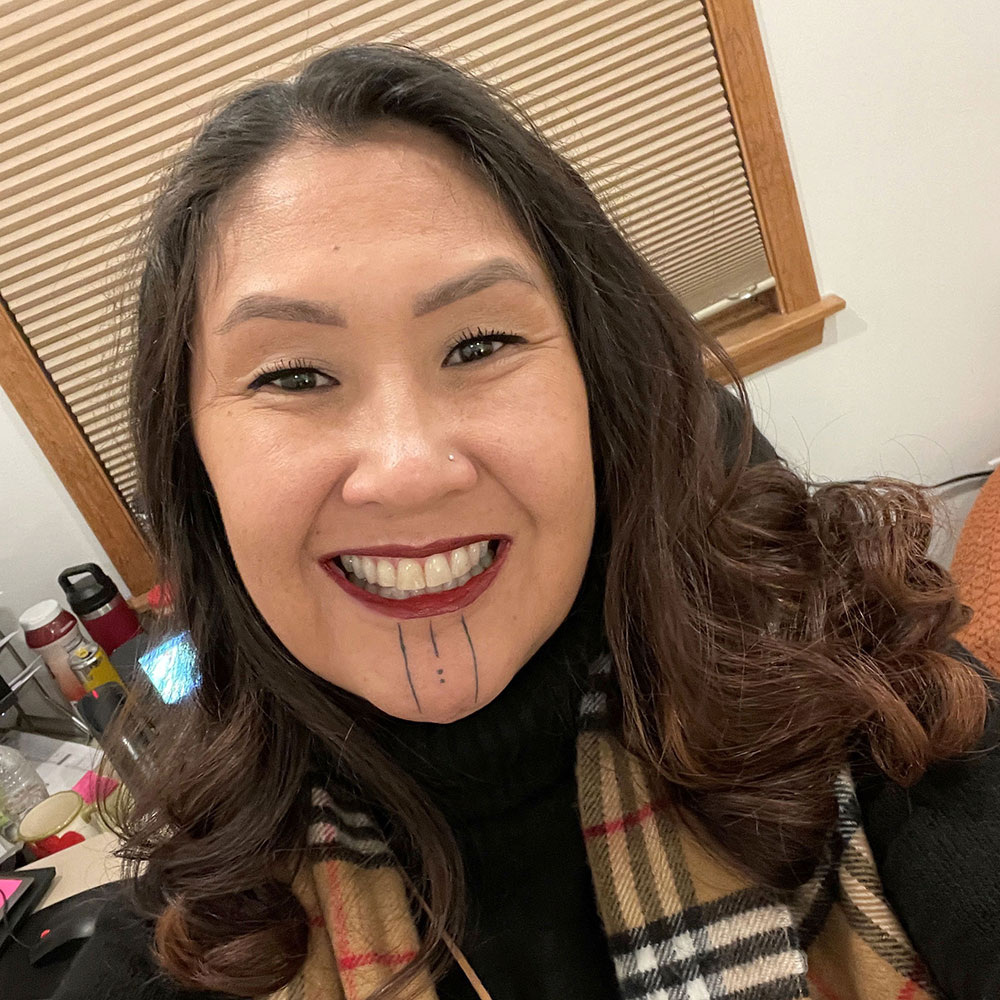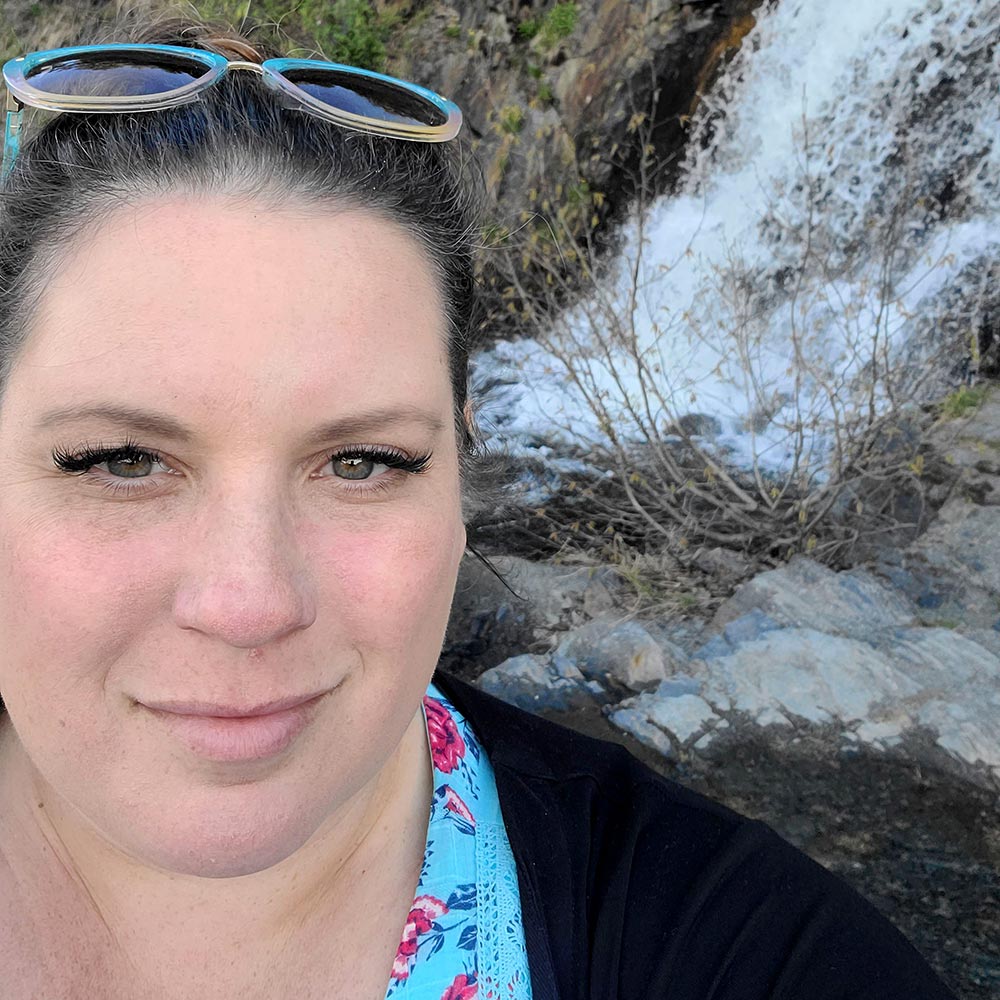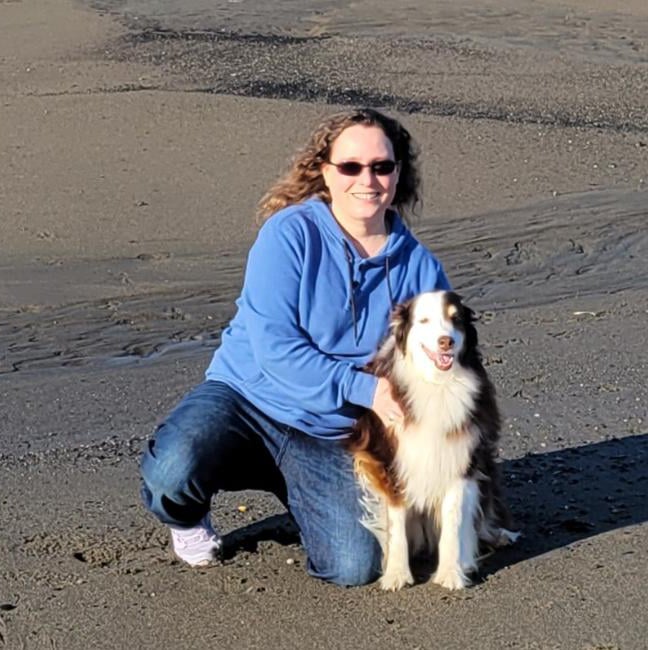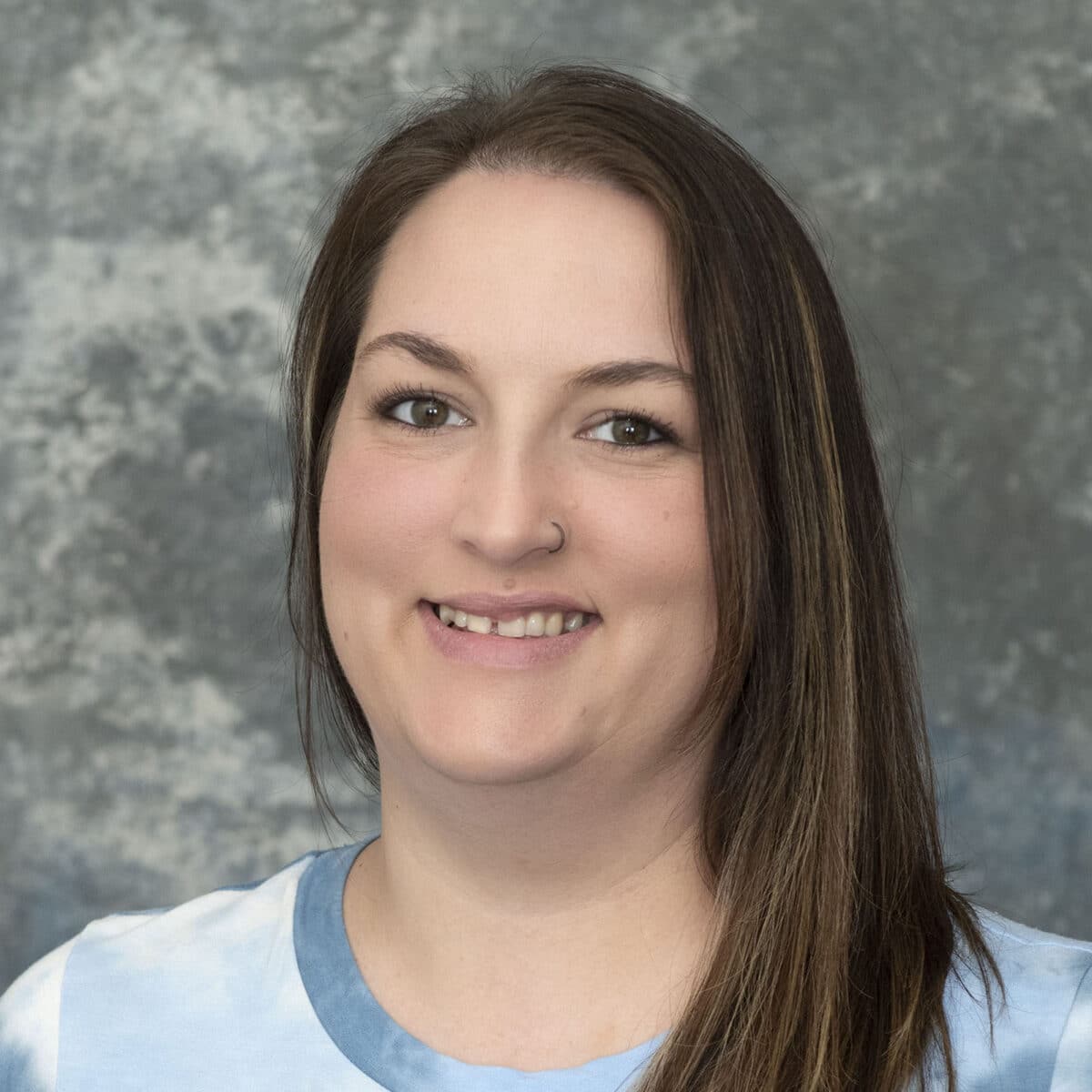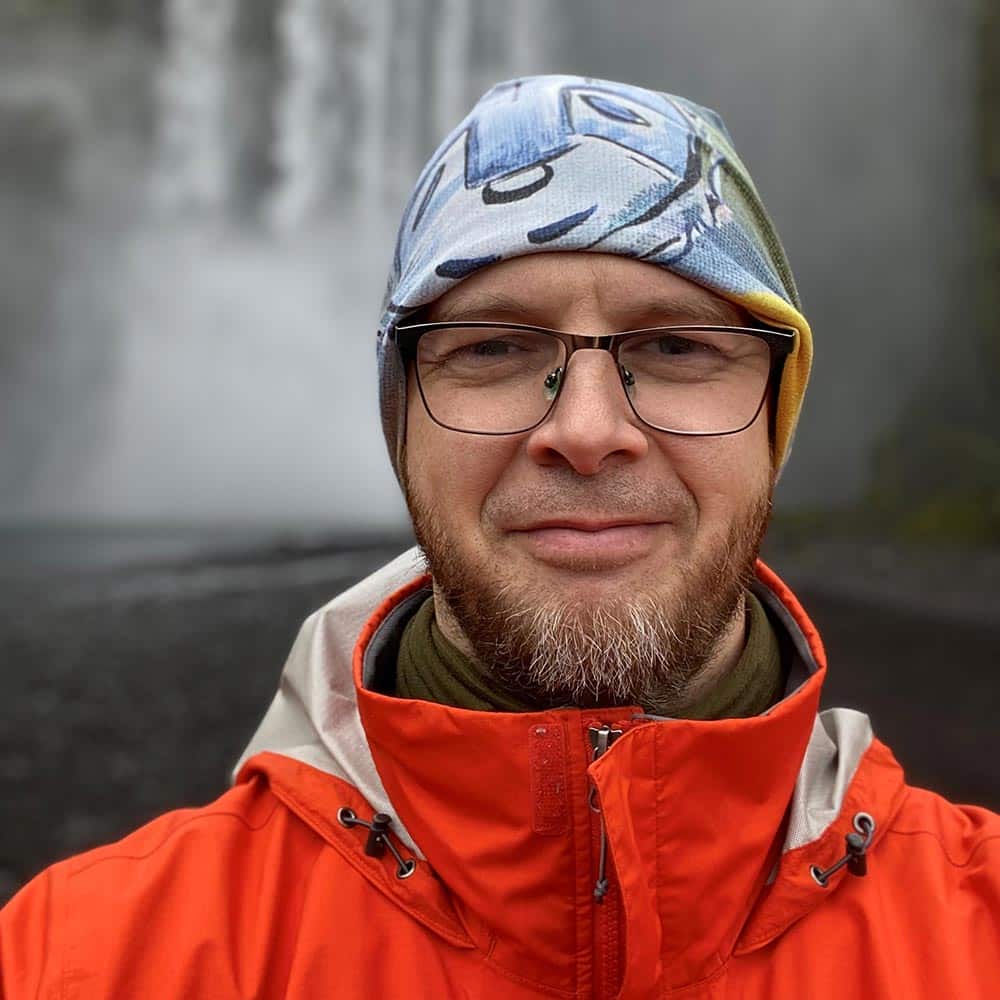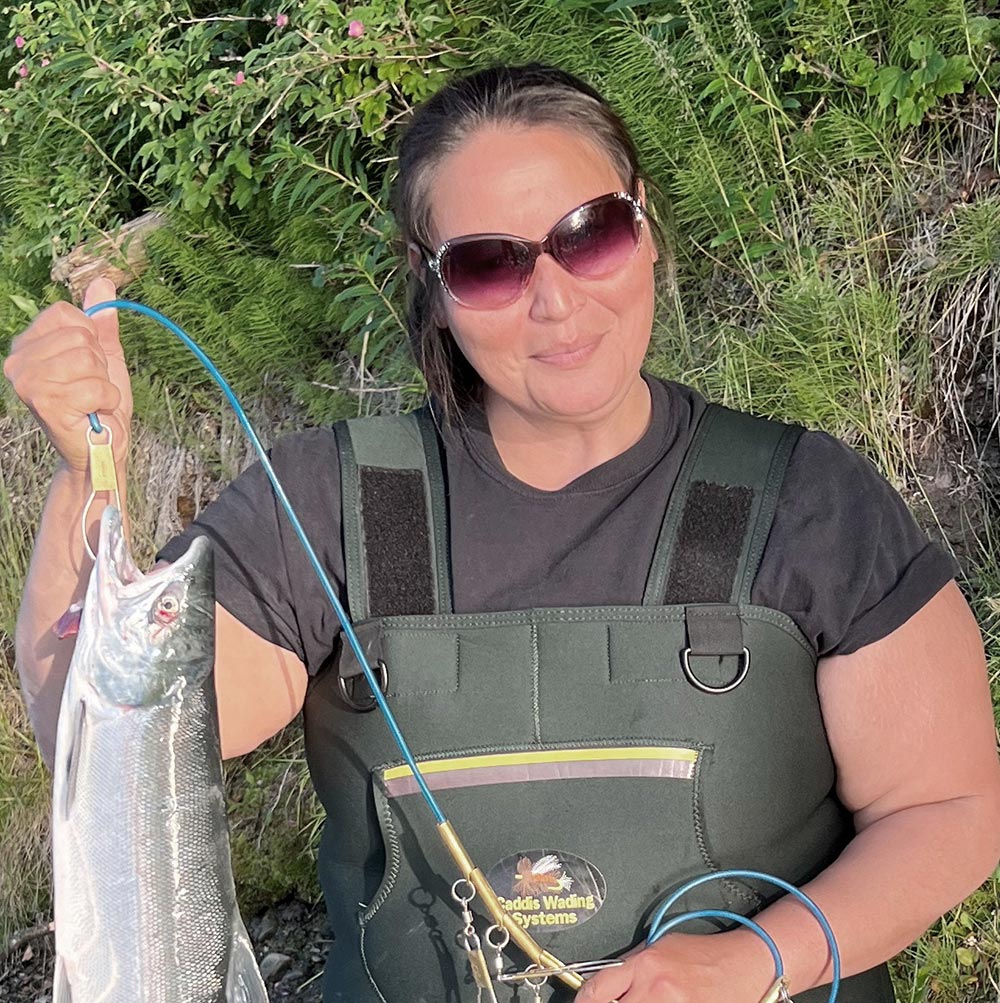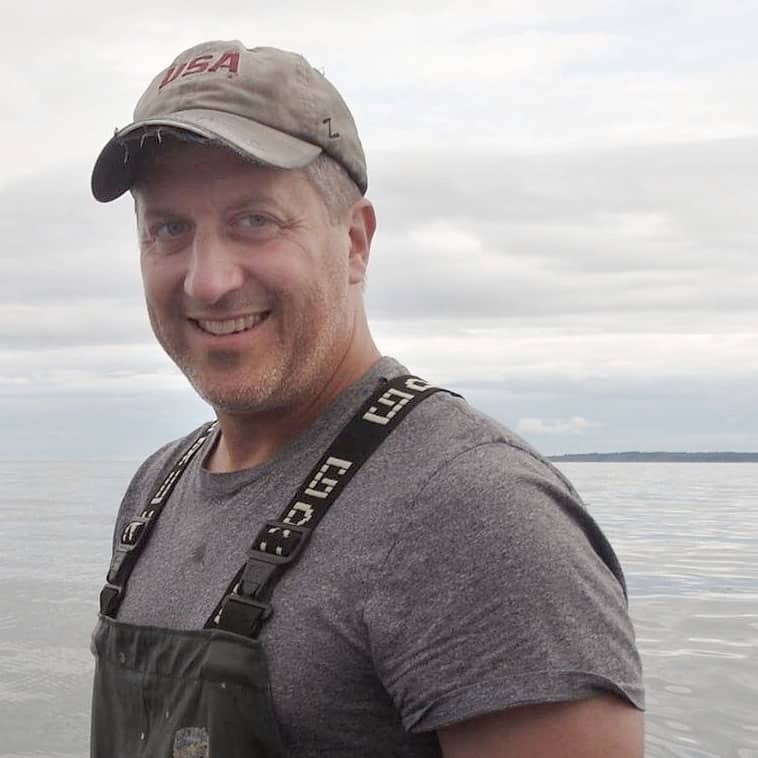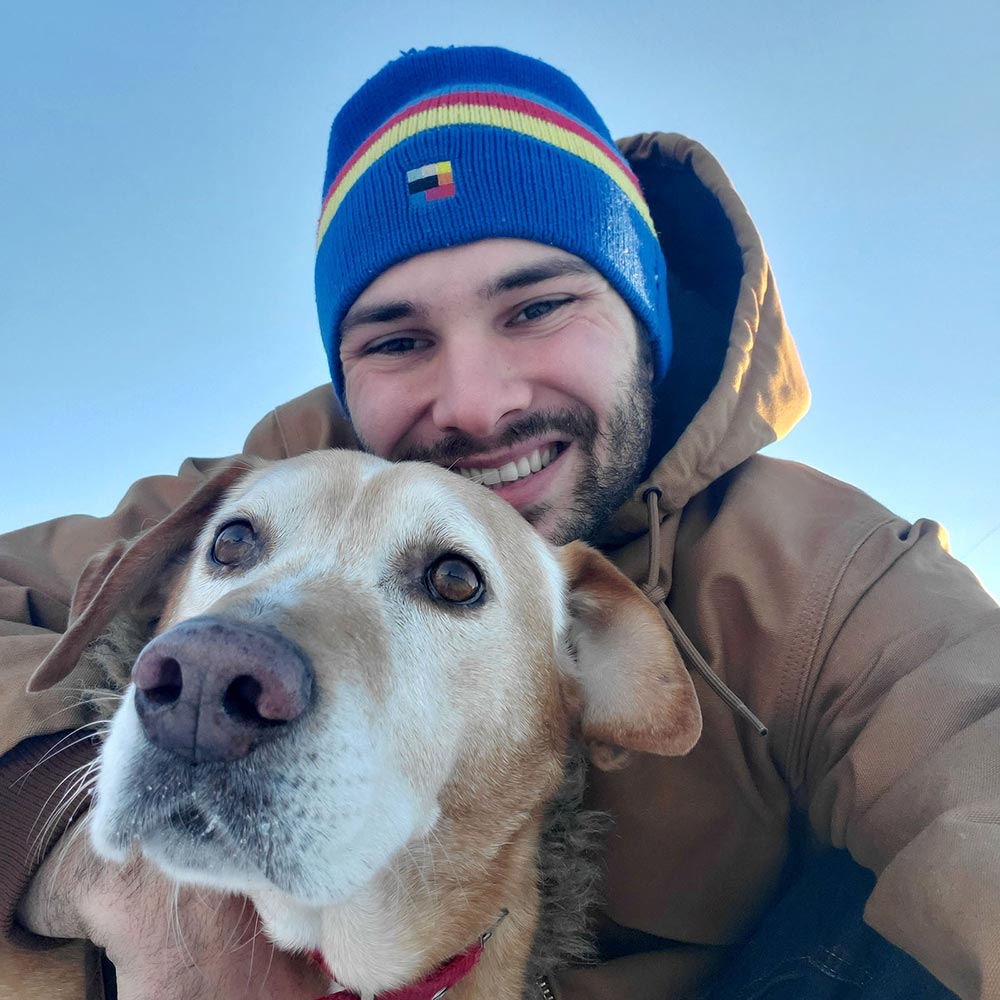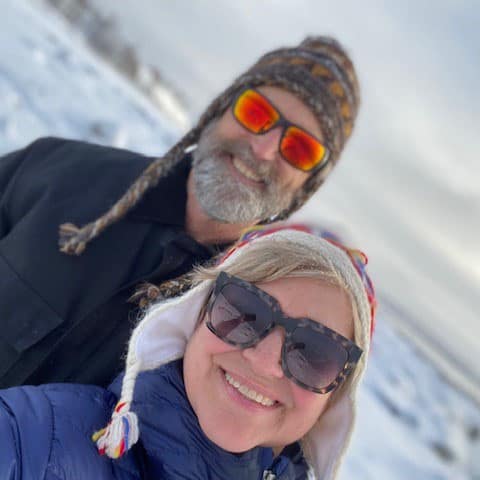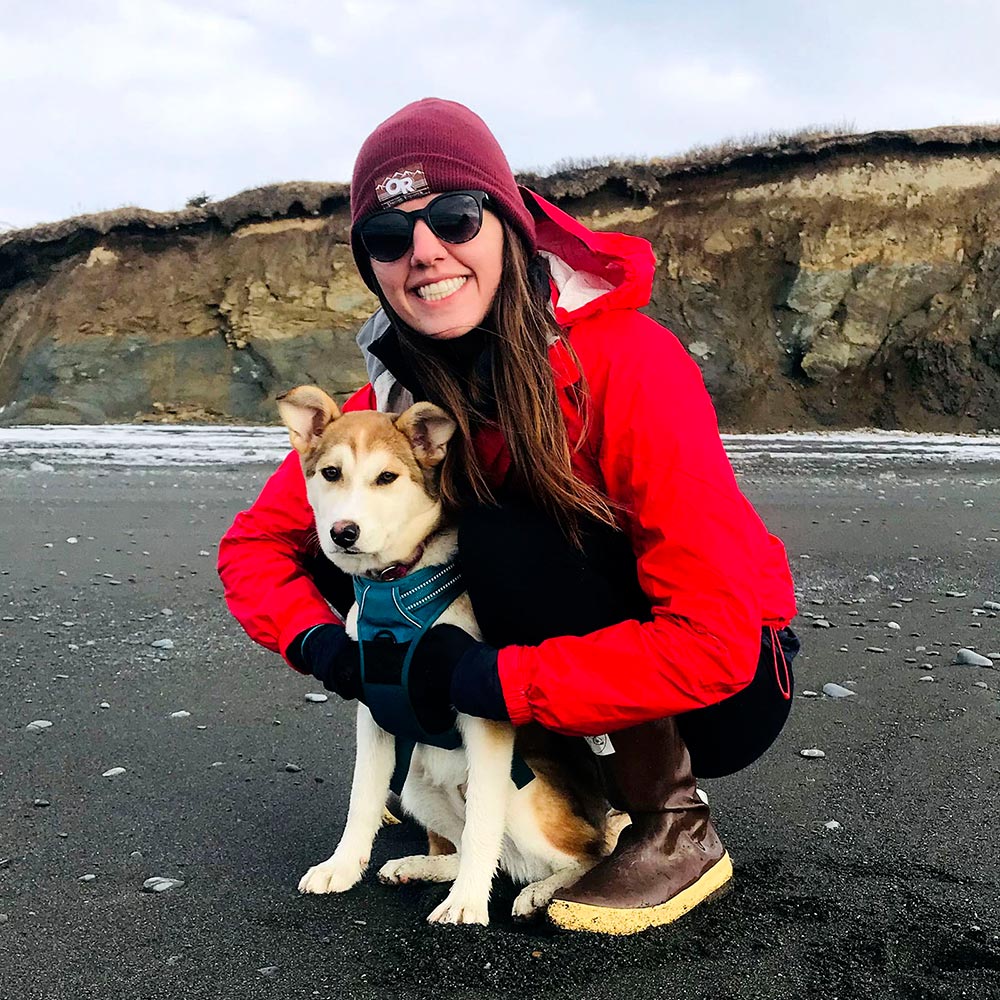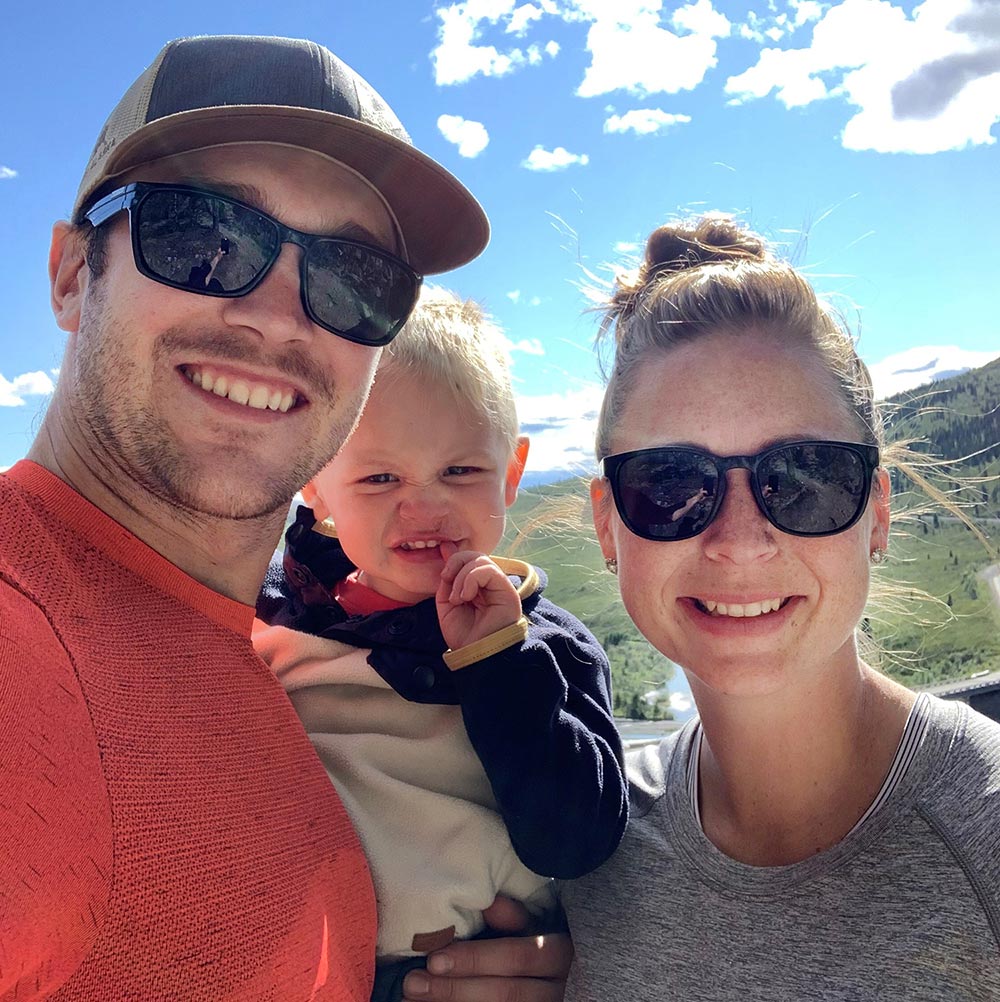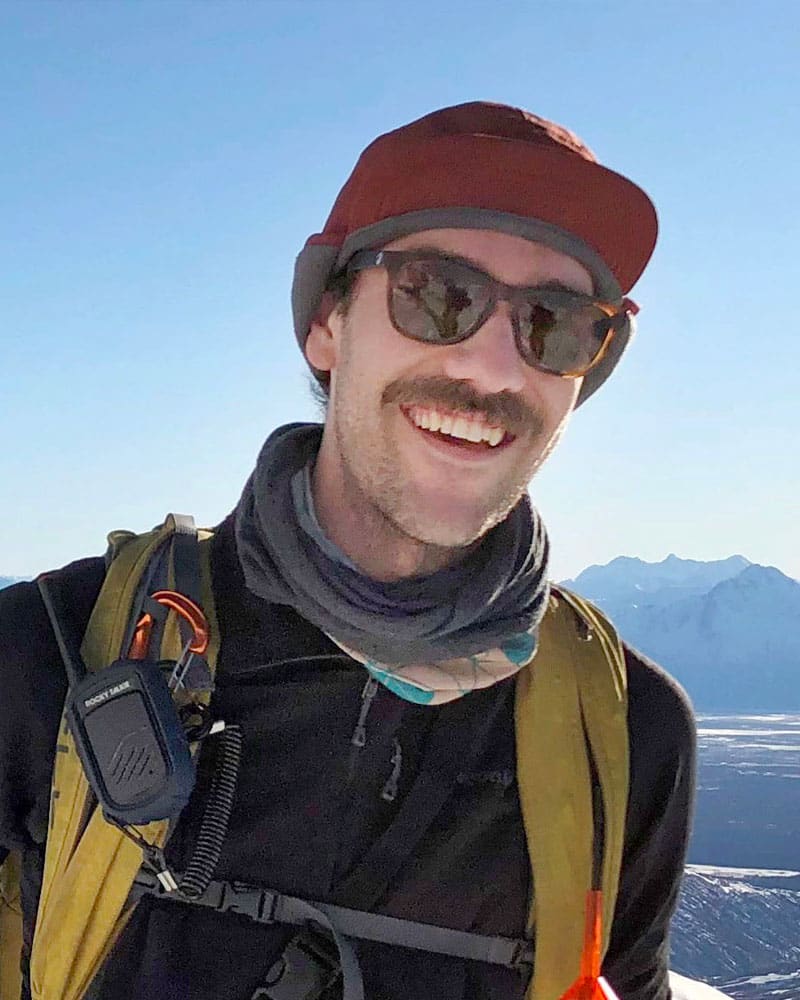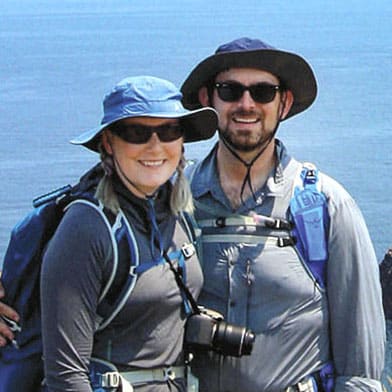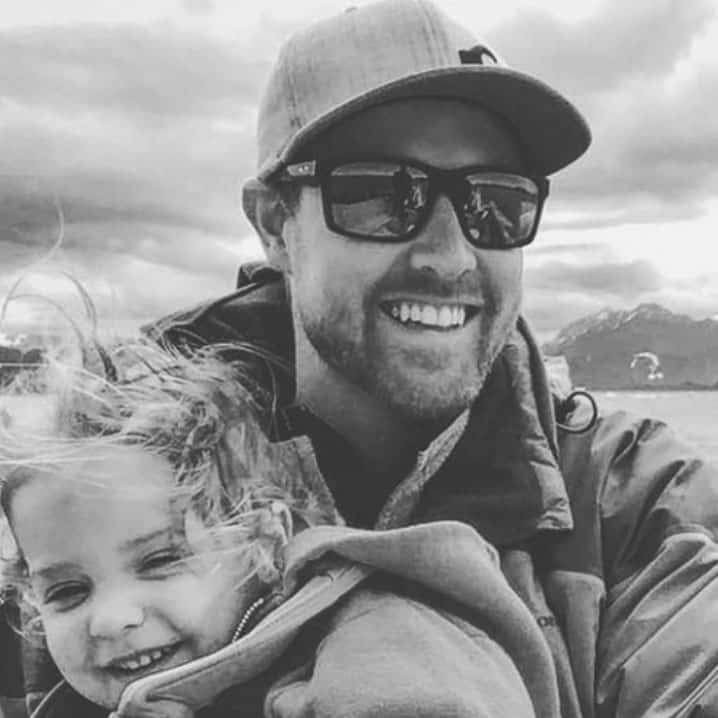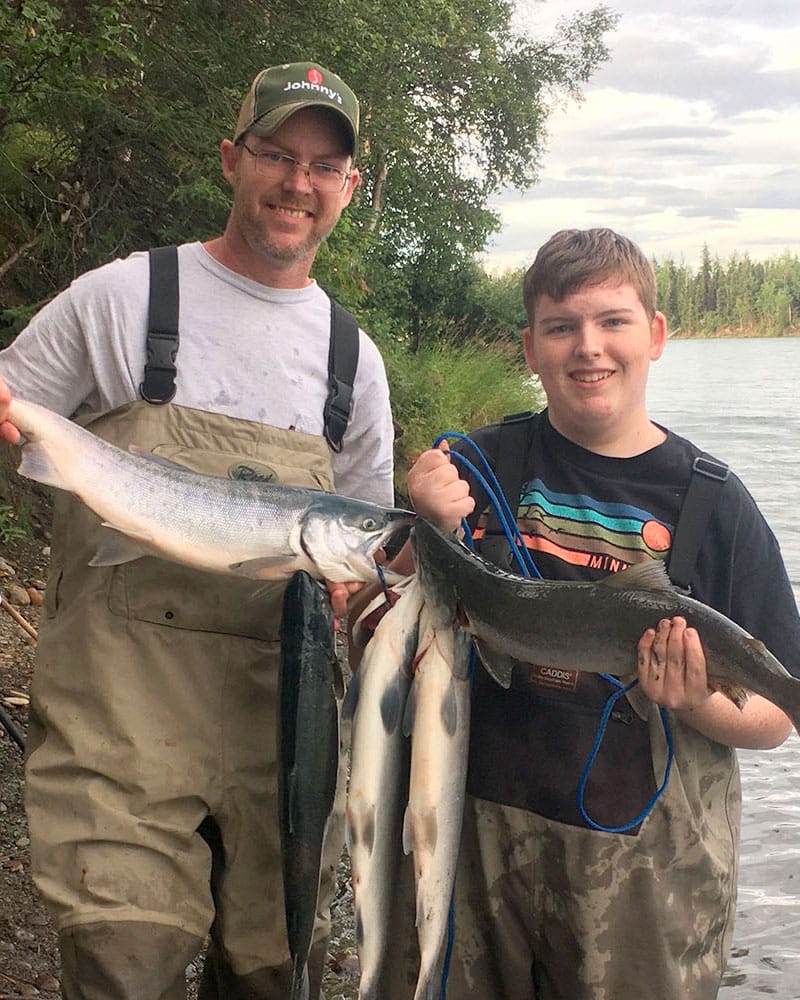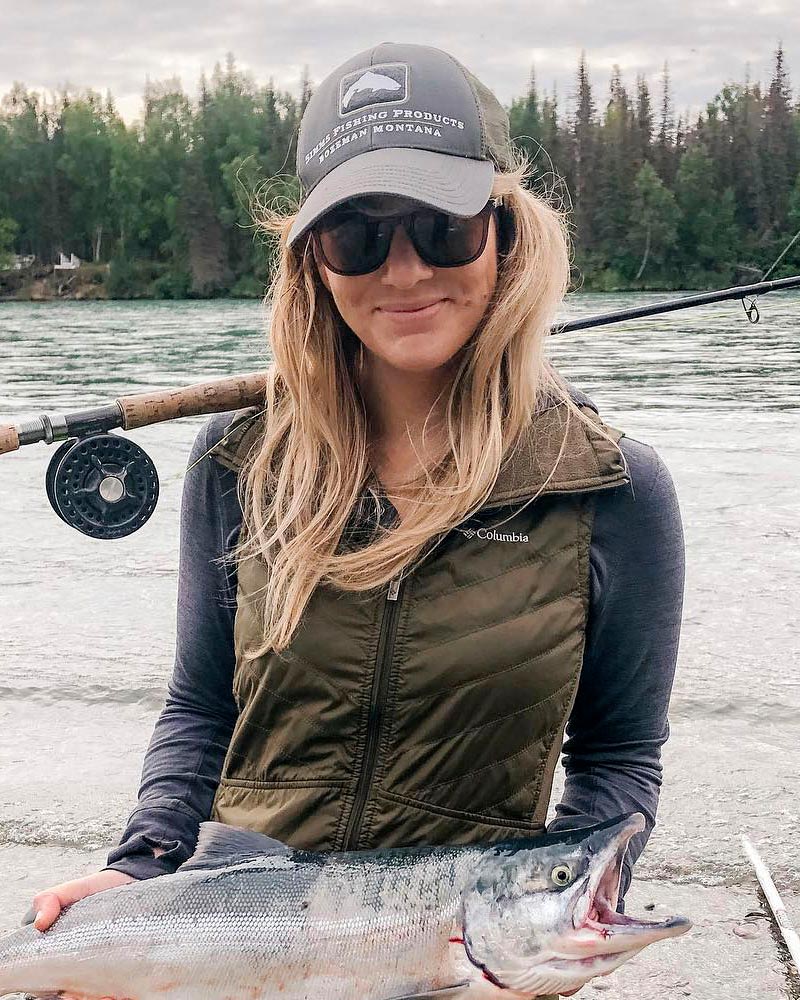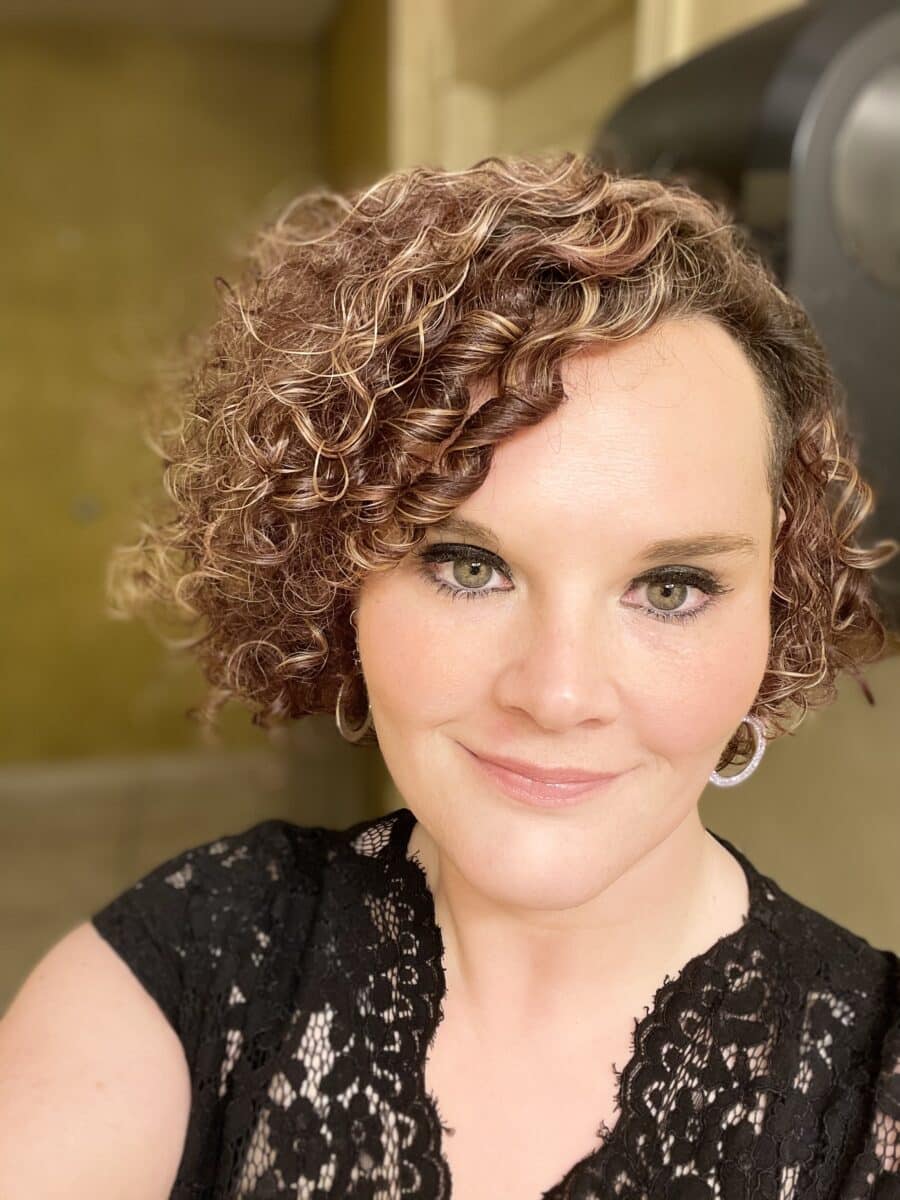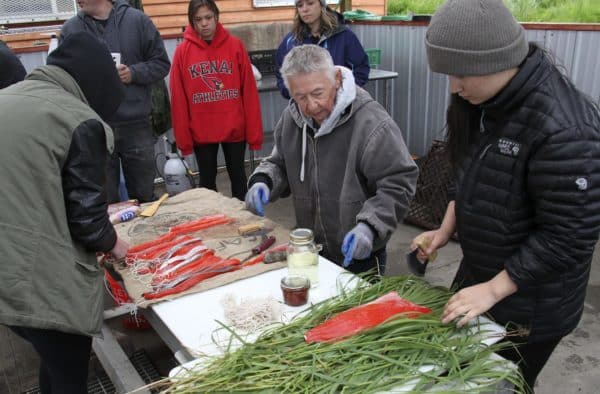
Mary Lou Bottorff, in grey at center, shows participants how to cut salmon into strips for smoking during a Yinihugheltani workshop at the tribal fishery in June. Grass on the cutting board serves the same purpose as the burlap – to keep the fillets from sliding as they are cut.
With an ulu in her right hand and a salmon filet under her left, Mary Lou Bottorff leaned forward and slid the blade toward the fish’s tail. A thin strip of meat, the length of a ruler, peeled away from the slab.
“You get better leverage with an ulu than a long knife,” Bottorff said. “Always cut from the head end of the fish toward the tail.”
About 15 people huddled around the wooden table, covered in burlap, as the tribal Elder neatly cut filet after filet into dozens of strips. Between slices, she slashed the ulu across a smooth rock sitting atop the table. Soon the strips went into a bucket of brine, where they would soak for precisely 25 minutes before hanging to dry.
Bottorff, 76, led a salmon smoking demonstration in partnership with the tribe’s suicide prevention program, Yinihugheltani, at the tribal fishery site in June. The event catered toward tribal and community youth but was open to anyone interested in attending. The goal was to teach attendees traditional methods of preparing salmon for the smoker.
Bottorff processed her first salmon at the age of 8 when she was an orphan at the Holy Cross Mission along the Yukon River.
In those days, Bottorff remembers, it was not unusual for her and the other orphans to clean 500 king salmon a day.
“It was up to us kids to do all the cutting, stripping, hanging,” she said.
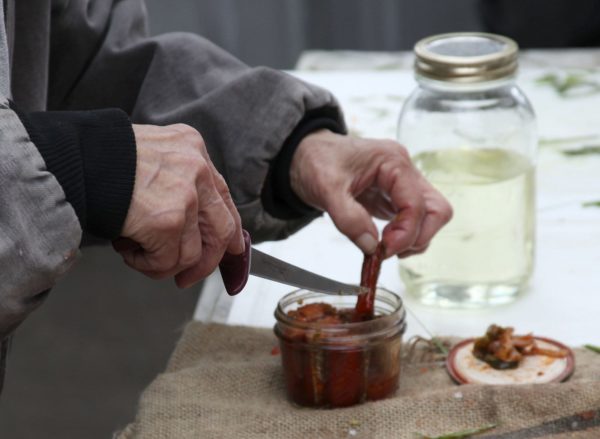
Mary Lou Bottorff pulls smoked salmon from a jar for participants to sample at the end of the workshop.
On this afternoon, Bottorff was preparing sockeye or “red” salmon for the smoker and offered a range of tips:
- When cutting the meat, slice from the head of the fish toward the tail
- When putting the meat up to dry, hang it vertically with the tail end of the fish up
- Soak the first batch of fish in brine for 25 minutes, and add five minutes for each additional batch
- After brining, hang the fish to dry until a glaze appears over the meat
- A “cold” smoke requires more smoking time than a “hard” smoke
Working alongside Bottorff, participants has a chance to cut fish, place it in the brine and hang it to dry. Those who attended called the demonstration a great learning experience.
Youth tribal member Jasmine Koster was impressed that Bottorff didn’t use exact measurements when creating the brine – choosing instead to dip her finger into the liquid and lick it for taste before adding more ingredients.
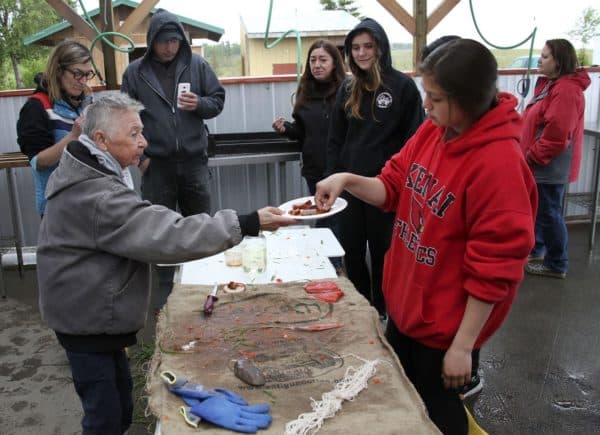
Mary Lou Bottorff offers smoked salmon to Julianne Wilson and other participants to sample at the end of the workshop.
Koster, who is enrolled in college and currently working as a language apprentice for the tribe, said it’s important for youth to learn from tribal Elders so traditions can be passed down to future generations.
“It’s important to honor peoples’ journey that they’ve gone through over the course of their life by coming out and listening to them,” she said.
Koster’s friend, Marianne Ensley, attended because she doesn’t have much experience processing fish and wanted to learn. It was only the second tribal event Ensley had attended but now she plans on attending more.
The best part of the demonstration, she said, was getting hands-on experience.
“Mary Lou was really sweet,” Ensley said. “It was really cool to learn from an Elder that has been doing this pretty much her whole life now, learning from somebody who already knows the tricks of the trade and everything, and then teaching youth.”
And Bottorff was happy to share her knowledge.
“I need to pass it down,” she said. “It needs to be passed on.”

